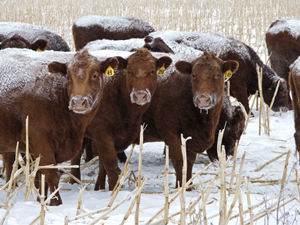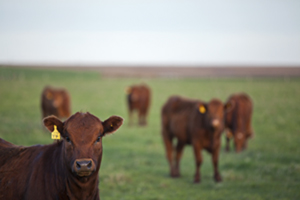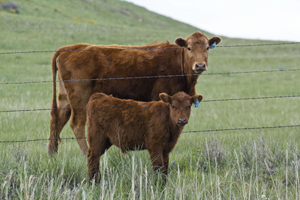Top 10 Blog Posts of 2018
This past year we published 80 blog posts that offered production tips and decision tools, provided a science-based perspective on issues in the media, highlighted new beef, cattle and forage research projects and results, and announced other exciting initiatives. Of those, these were the top 10 most popular:
10) 5 tips for grazing corn this fall and winter
Being sure to feed test, easing cattle into corn grazing by providing only a couple of days access to feed plus a hay bale, and making sure proper shelter is provided can make a big difference in how cattle perform while grazing corn.
http://www.beefresearch.ca/blog/5-tips-for-grazing-corn-this-fall-and-winter/
9) Are cattle drinking Canada dry?
We often see headlines about how human lifestyle and dietary choices (particularly beef consumption) can impact environmental sustainability. They often vilify beef and don’t tell the whole story. This article provided a more in-depth look at cattle’s role.
http://www.beefresearch.ca/blog/are-cattle-drinking-canada-dry/
8) How castration method and age affect pain in young calves
This article provided an overview of research funded in part by the Canadian Beef Cattle Check-Off, which looked at the effect of age and method on pain of castration. This research showed it is best to castrate calves as young as possible and that banding may be less painful prior to 2 months of age but more painful after 4 months of age.
http://www.beefresearch.ca/blog/how-castration-method-and-age-affect-pain-in-young-calves/
7) Producers with large herds are believers in low stress weaning
Four producers from across Canada shared their experiences using different low stress weaning techniques. All of the producers featured in this blog post own large cattle herds and have found ways to make low stress weaning work for them.
http://www.beefresearch.ca/blog/producers-with-large-herds-are-believers-in-low-stress-weaning/
6) Intranasal vaccines are timely and effective
Intranasal vaccines are becoming more common. A rancher who uses them and a researcher who understands the science behind them offered some tips on using them effectively.
http://www.beefresearch.ca/blog/intranasal-vaccines-are-timely-and-effective/
5) Economics of raising or buying heifers for beef cow replacement
Raising or buying in replacement heifers both have pros and cons. This blog post outlined some of the things to consider with raising and buying replacement heifers and provided the tools to calculate the economics for your own operation.
http://www.beefresearch.ca/blog/economics-of-raising-or-buying-heifers-for-beef-cow-replacement/

4) The five percent rule
Making small changes to your operation can add up to major gains or cost savings. This blog post explained how making changes of just 5% in three key areas can add up to an over 300% increase in profitability.
http://www.beefresearch.ca/blog/fivepercentrule/
3) 8 producers share their recent changes
Eight producers from across Canada shared changes they have made to their management, day-to-day operations, or ways of thinking that have helped them to be more efficient, profitable, or just make doing chores easier.
http://www.beefresearch.ca/blog/eight-beef-producers-share-their-recent-changes/
2) AI vs natural service
Using AI may be more economical than you think. This article outlined the pros and cons of using AI vs natural service and features a tool to easily calculate the economics on your operation.

1) This December you will need a prescription to buy virtually any livestock antibiotic.
On December 1, 2018 Health Canada moved all medically important antibiotics used in livestock to prescription only, meaning that many products that were previously available over the counter are no longer available to purchase that way. This post outlined what that means for producers and what steps to take to access these products.
Click here to subscribe to the BCRC Blog and receive email notifications when new content is posted.
The sharing or reprinting of BCRC Blog articles is welcome and encouraged. Please provide acknowledgement to the Beef Cattle Research Council, list the website address, www.BeefResearch.ca, and let us know you chose to share the article by emailing us at info@beefresearch.ca.
We welcome your questions, comments and suggestions. Contact us directly or generate public discussion by posting your thoughts below.







